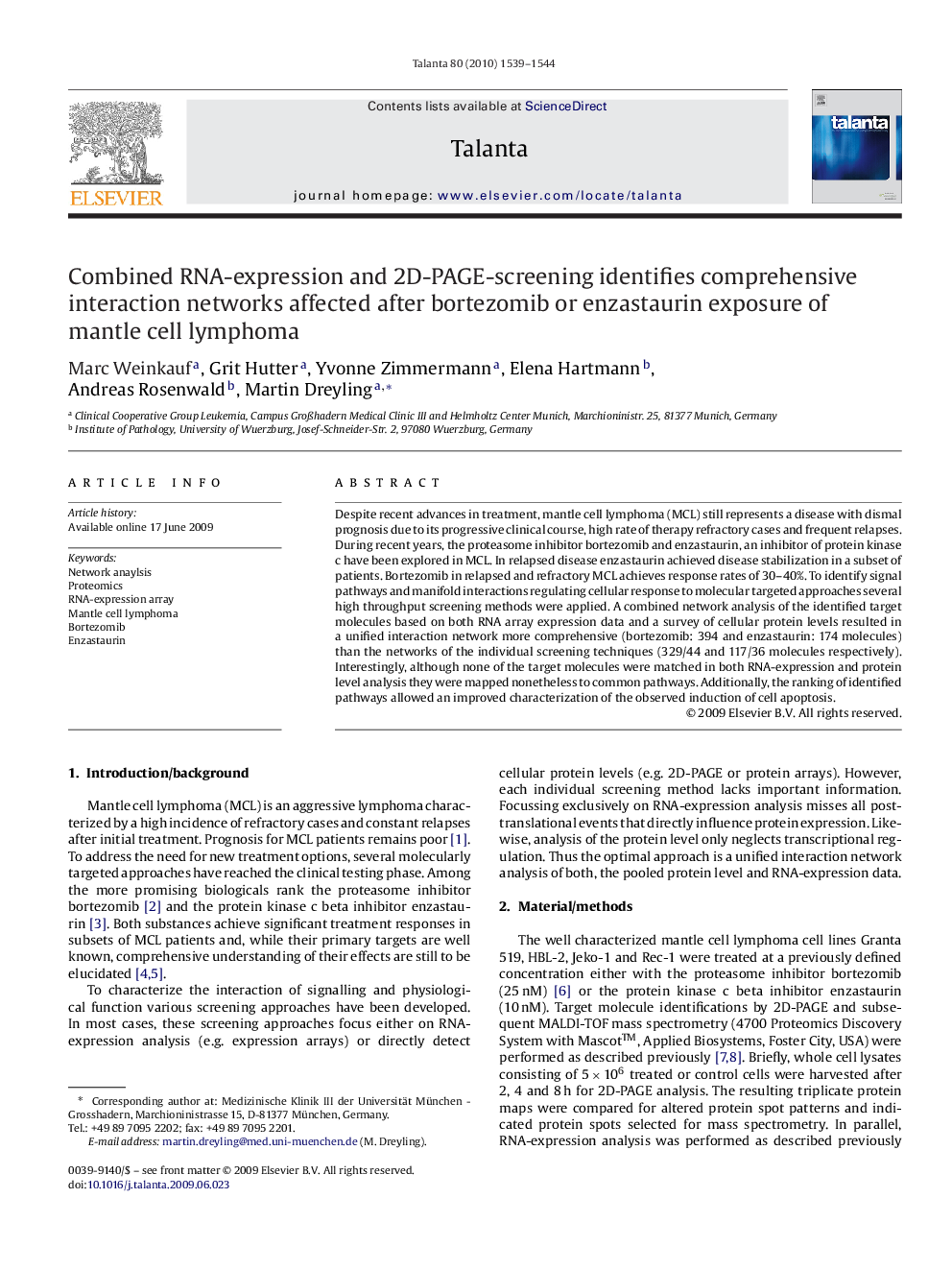| Article ID | Journal | Published Year | Pages | File Type |
|---|---|---|---|---|
| 1243211 | Talanta | 2010 | 6 Pages |
Despite recent advances in treatment, mantle cell lymphoma (MCL) still represents a disease with dismal prognosis due to its progressive clinical course, high rate of therapy refractory cases and frequent relapses. During recent years, the proteasome inhibitor bortezomib and enzastaurin, an inhibitor of protein kinase c have been explored in MCL. In relapsed disease enzastaurin achieved disease stabilization in a subset of patients. Bortezomib in relapsed and refractory MCL achieves response rates of 30–40%. To identify signal pathways and manifold interactions regulating cellular response to molecular targeted approaches several high throughput screening methods were applied. A combined network analysis of the identified target molecules based on both RNA array expression data and a survey of cellular protein levels resulted in a unified interaction network more comprehensive (bortezomib: 394 and enzastaurin: 174 molecules) than the networks of the individual screening techniques (329/44 and 117/36 molecules respectively). Interestingly, although none of the target molecules were matched in both RNA-expression and protein level analysis they were mapped nonetheless to common pathways. Additionally, the ranking of identified pathways allowed an improved characterization of the observed induction of cell apoptosis.
